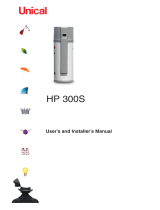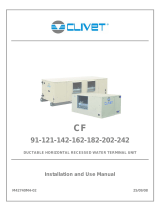
Page2
INDEX
1 GENERALITY ....................................................................................................................................................................................................................................................3
1.1.1 INTRODUCTION .............................................................................................................................................................................................................................3
1.1.2 BASIC SAFETY RULES ..................................................................................................................................................................................................................3
1.1.3 SYMBOLOGY ..................................................................................................................................................................................................................................4
1.1.4 WARNINGS .....................................................................................................................................................................................................................................4
1.1.5 COMPLIANCE .................................................................................................................................................................................................................................5
1.1.6 RANGE ............................................................................................................................................................................................................................................5
1.1.7 IDENTIFICATION ............................................................................................................................................................................................................................6
1.1.8 CONSTRUCTION FEATURES .......................................................................................................................................................................................................6
1.1.9 PACKING AND TRANSPORT .........................................................................................................................................................................................................8
1.1.10 RECEPTION, CONTROL AND HANDLING ..............................................................................................................................................................................8
1.1.11 DISASSEMBLY AND DISPOSAL ..............................................................................................................................................................................................8
2 INSTALLATION .................................................................................................................................................................................................................................................9
2.1.1 INSTALLATION CONDITIONS .......................................................................................................................................................................................................9
2.1.2 UNIT PLACEMENT .........................................................................................................................................................................................................................9
2.1.3 CONDENSATE DRAIN CONNECTION ....................................................................................................................................................................................... 10
3 AREA CONNECTIONS .................................................................................................................................................................................................................................. 11
3.1.1 AREAUAL ORIENTATIONS ......................................................................................................................................................................................................... 11
4 HYDRAULIC CONNECTIONS ....................................................................................................................................................................................................................... 11
4.1.1 GENERALITY ............................................................................................................................................................................................................................... 12
4.1.2 CONNECTION PLACEMENT AND PROCEDURES ................................................................................................................................................................... 12
4.1.3 2-3 WAY VALVE CONNECTION ................................................................................................................................................................................................. 13
4.1.4 RECOMMENDED CONNECTION DIAGRAMS ........................................................................................................................................................................... 14
4.1.5 REFRIGERATOR SCHEMES ...................................................................................................................................................................................................... 15
5 ELECTRICAL CONNECTIONS ...................................................................................................................................................................................................................... 16
5.1.1 GENERALITY ............................................................................................................................................................................................................................... 16
5.1.2 CONNECTION PLACEMENT AND PROCEDURES ................................................................................................................................................................... 16
5.1.3 UNIT WIRING DIAGRAMS ........................................................................................................................................................................................................... 17
5.1.4 POSSIBLE OPERATING MODES AND CONFIGURATIONS FOR THE UNIT .......................................................................................................................... 19
5.1.5 VERSION ELECTRICAL CONNECTIONS .................................................................................................................................................................................. 20
6 COMMISSIONING AND METHOD OF USE .................................................................................................................................................................................................. 25
6.1.1 OPERATION VERSION -K- CNU REMOTE PANEL ................................................................................................................................................................... 25
7 MAINTENANCE .............................................................................................................................................................................................................................................. 35
7.1.1 CLEANING.................................................................................................................................................................................................................................... 35
7.1.2 CLEANING THE HEAT EXCHANGER ........................................................................................................................................................................................ 35
7.1.3 GENERAL CLEANING OF THE UNIT ......................................................................................................................................................................................... 36
8 ALARMS ......................................................................................................................................................................................................................................................... 37
8.1.1 GENERALITY ............................................................................................................................................................................................................................... 37
8.1.2 PROBLEMS WITHOUT ERROR INDICATION ON THE DISPLAY ............................................................................................................................................ 37
8.1.3 TABLE OF ALARMS INDICATED BY THE DISPLAY ................................................................................................................................................................. 38
9 NOTES AND MAINTENANCE INFORMATION ............................................................................................................................................................................................. 39
NOTE .............................................................................................................................................................................................................................................................. 39























